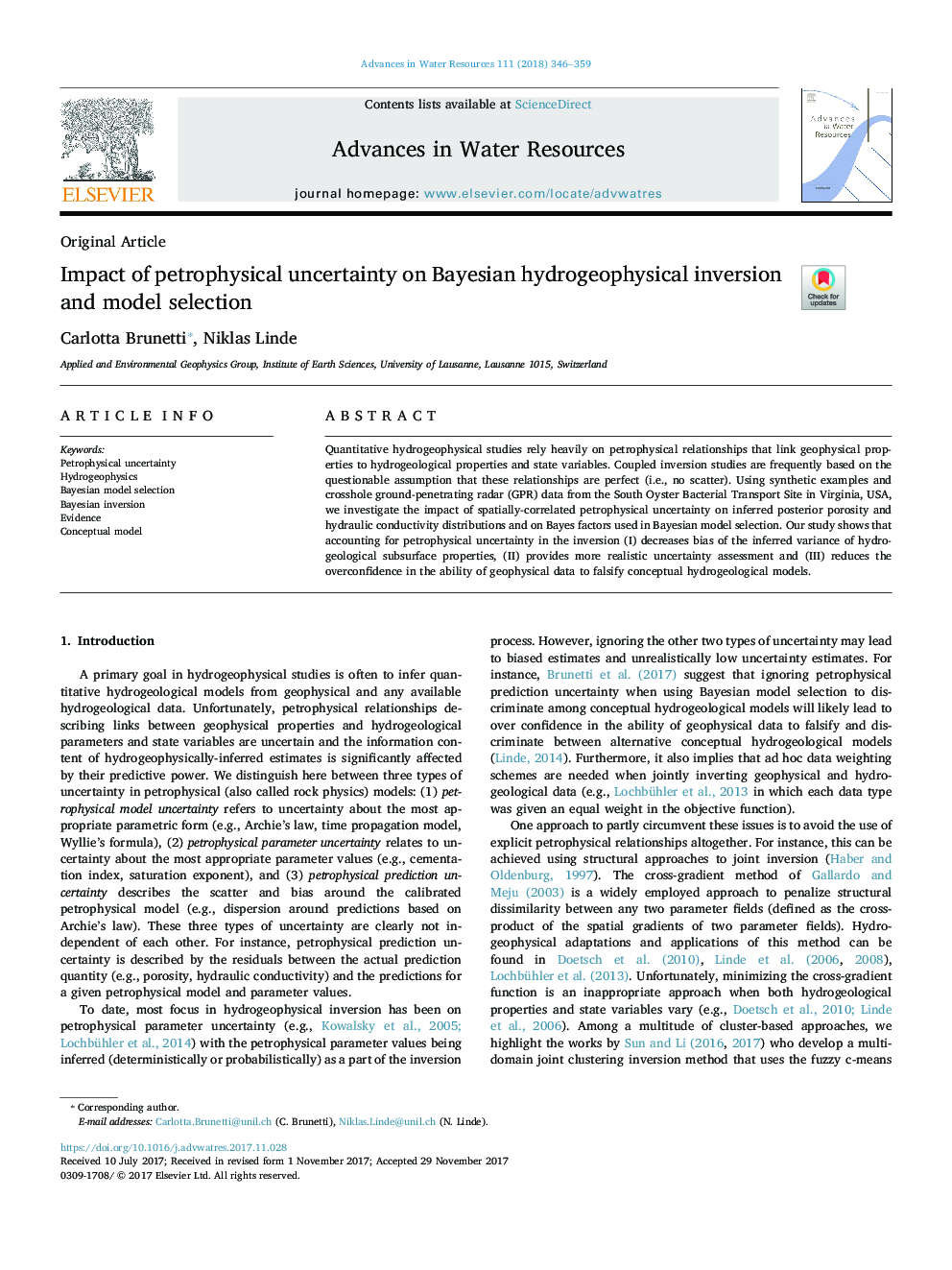| Article ID | Journal | Published Year | Pages | File Type |
|---|---|---|---|---|
| 8883414 | Advances in Water Resources | 2018 | 14 Pages |
Abstract
Quantitative hydrogeophysical studies rely heavily on petrophysical relationships that link geophysical properties to hydrogeological properties and state variables. Coupled inversion studies are frequently based on the questionable assumption that these relationships are perfect (i.e., no scatter). Using synthetic examples and crosshole ground-penetrating radar (GPR) data from the South Oyster Bacterial Transport Site in Virginia, USA, we investigate the impact of spatially-correlated petrophysical uncertainty on inferred posterior porosity and hydraulic conductivity distributions and on Bayes factors used in Bayesian model selection. Our study shows that accounting for petrophysical uncertainty in the inversion (I) decreases bias of the inferred variance of hydrogeological subsurface properties, (II) provides more realistic uncertainty assessment and (III) reduces the overconfidence in the ability of geophysical data to falsify conceptual hydrogeological models.
Related Topics
Physical Sciences and Engineering
Earth and Planetary Sciences
Earth-Surface Processes
Authors
Carlotta Brunetti, Niklas Linde,
